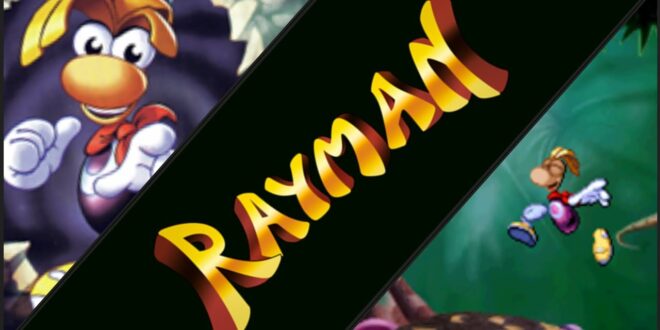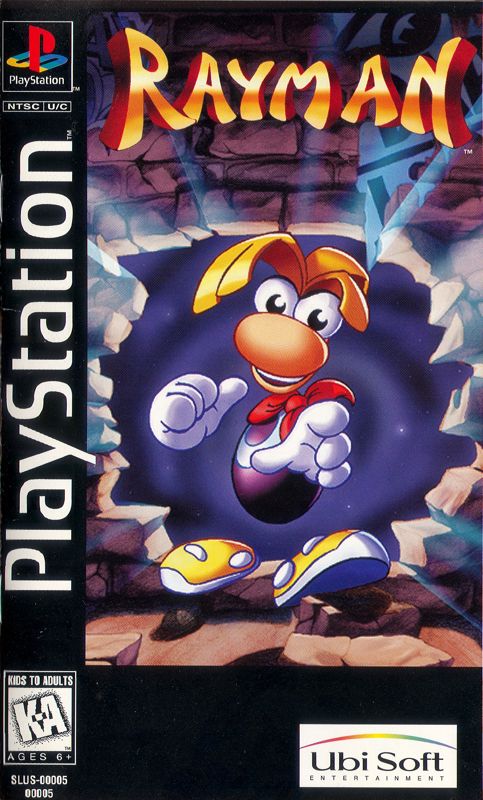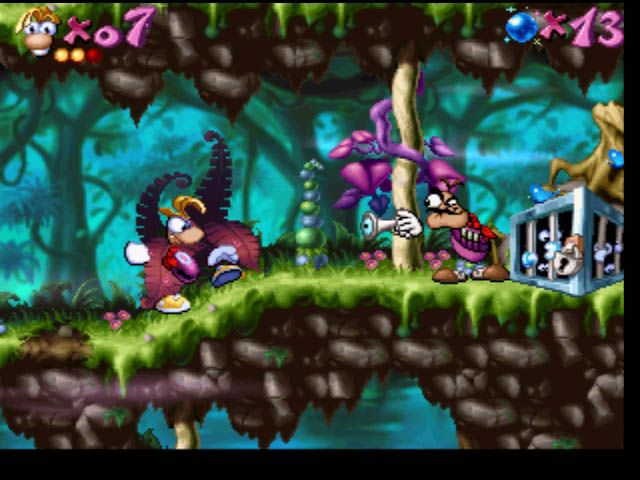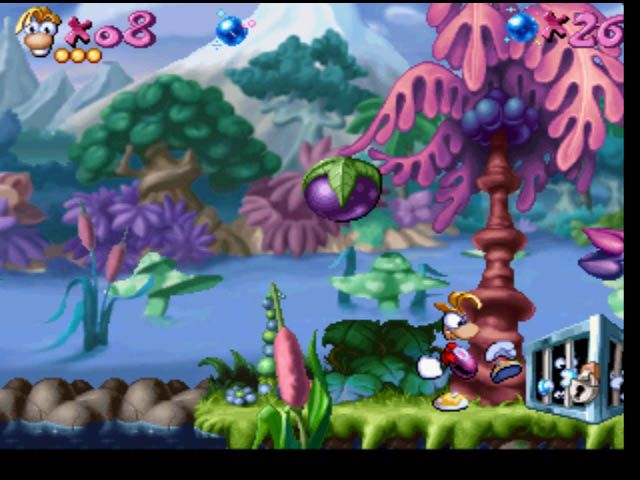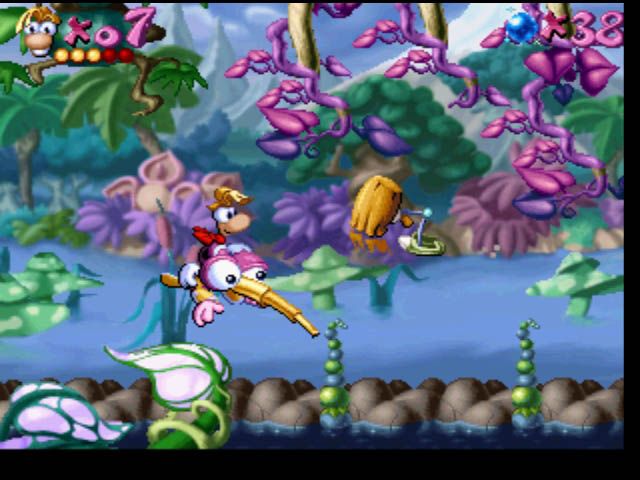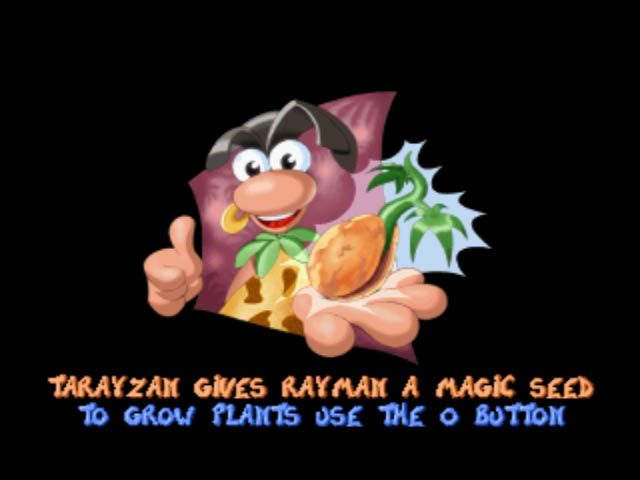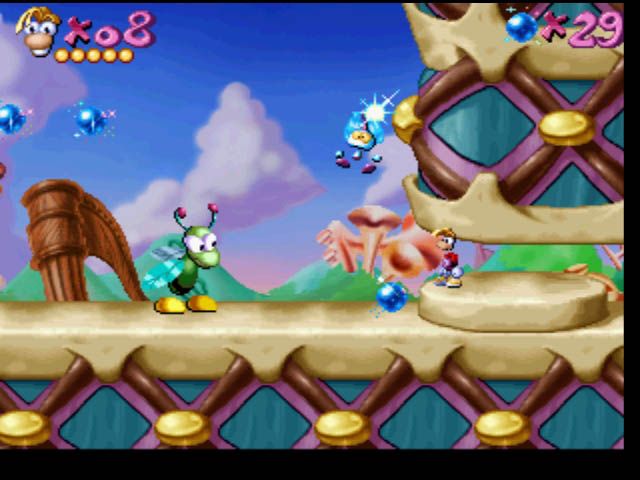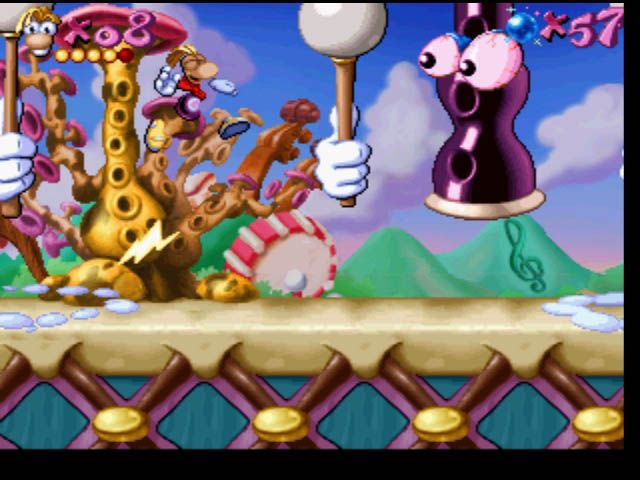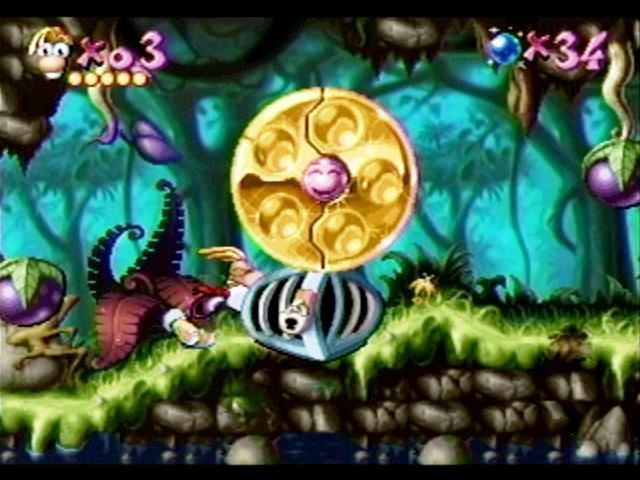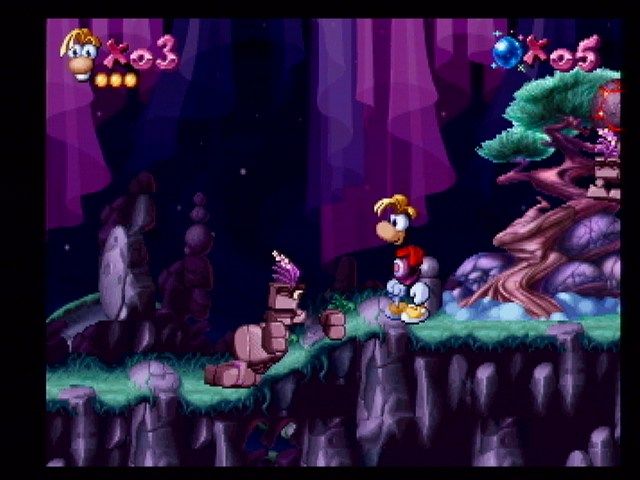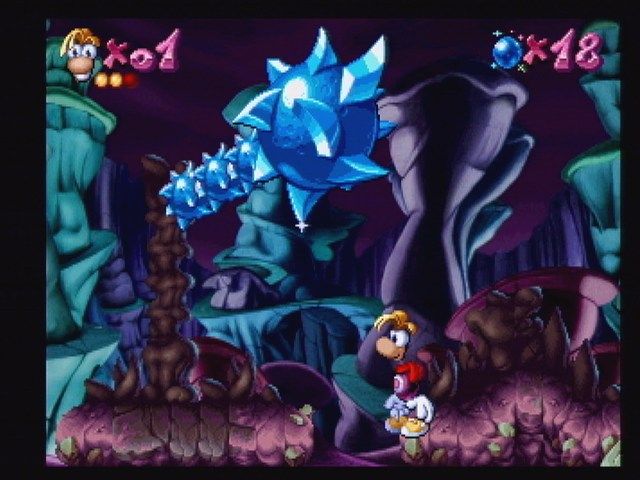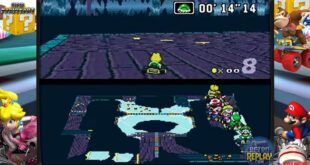Rayman PlayStation Review and Longplay – A Timeless 1995 Classic
Introduction
In the mid-90s, the platforming genre was thriving, but few titles captured the magic of the era quite like Rayman on the PlayStation. Released in 1995 by Ubisoft, this 2D platforming masterpiece introduced players to a limbless hero whose charm, fluid animation, and breathtaking worlds helped define the system’s early library. The vibrant art style, precise gameplay, and unforgettable soundtrack made it more than just a fun game — it became a benchmark for artistic and technical achievement in the 16-bit-to-32-bit transition.
(HEY YOU!! We hope you enjoy! We try not to run ads. So basically, this is a very expensive hobby running this site. Please consider joining us for updates, forums, and more. Network w/ us to make some cash or friends while retro gaming, and you can win some free retro games for posting. Okay, carry on 👍)
This rayman playstation review and rayman playstation longplay takes a deep look at its development, gameplay, music, and lasting legacy, showing why it remains a must-play for fans of classic platformers.
Development and Creation
The creative force behind Rayman was Michel Ancel, who envisioned a whimsical yet challenging platformer with a hero unlike any other. Rayman’s lack of arms and legs wasn’t just a quirky design choice — it allowed smoother animation and more expressive movement. Development began on the Atari ST, later shifting to the more powerful PlayStation hardware, where the team at Ubisoft Montpellier poured over three years into crafting hand-drawn animations, intricate levels, and memorable characters.
Story and Setting
The plot is simple yet enchanting. When the evil Mr. Dark steals the Great Protoon — the source of harmony in Rayman’s world — chaos follows, scattering the Electoons across strange and beautiful lands. Rayman’s quest to restore balance takes him through lush forests, surreal musical realms, and increasingly perilous environments.
Every stage feels like a page from a fairy tale, combining colorful artistry with clever design.
Visual Excellence
Rayman’s visuals were revolutionary in 1995. The PlayStation’s 2D capabilities were pushed to their limits with vibrant backgrounds, layered parallax scrolling, and animations that felt alive. From the flowing leaves of the Dream Forest to the surreal instruments of Band Land, every detail reflects the team’s creativity and technical skill.
Soundtrack and Audio
Composed by Rémi Gazel, the soundtrack is one of the most memorable of the era. Each world has its own mood, from lighthearted melodies to tense, dramatic tracks in later levels. Rayman’s cheerful voice lines, along with satisfying sound effects, add warmth and character to the gameplay experience.
Gameplay Mechanics
Rayman blends tight controls with evolving abilities. Players start with basic movement but soon unlock the Telescopic Fist for ranged attacks, Helicopter Hair for gliding, and other abilities that open up new exploration opportunities. Levels are filled with collectibles, hidden areas, and secrets, encouraging replay for full completion.
Legacy and Replay Value
Rayman became one of the PlayStation’s best-selling games, praised for its beauty, challenge, and design depth. Its difficulty, while steep, gave players a rewarding sense of accomplishment, especially when aiming for 100% completion. The game’s timeless look and feel keep it relevant decades later, and watching or playing through a full rayman playstation longplay remains a nostalgic treat for many.
Final Verdict
Nearly three decades on, Rayman stands as one of the finest 2D platformers ever made. Its combination of stunning art, charming characters, and skill-based gameplay make it an essential experience for retro gaming fans. Whether you revisit it through a full playthrough or enjoy it in longplay form, this rayman playstation review confirms it as a PlayStation classic that continues to inspire.
Rating: 9/10
Our REVIEW
Graphics - 92%
Sound - 100%
Gameplay - 88%
Replay value - 100%
95%
The verdict
Rayman for the PlayStation, released in 1995, is a visually stunning 2D platformer that introduced players to Ubisoft’s iconic limbless hero. With its hand-drawn graphics, fluid animations, and whimsical environments, the game blends charm with a steep difficulty curve that tests precision and timing. Players traverse imaginative worlds, free captive Electoons, and battle eccentric bosses, all set to a memorable soundtrack. Its blend of artistic style and challenging gameplay cemented Rayman as a classic and laid the foundation for a long-running franchise.
 Retro Replay Retro Replay gaming reviews, news, emulation, geek stuff and more!
Retro Replay Retro Replay gaming reviews, news, emulation, geek stuff and more!
